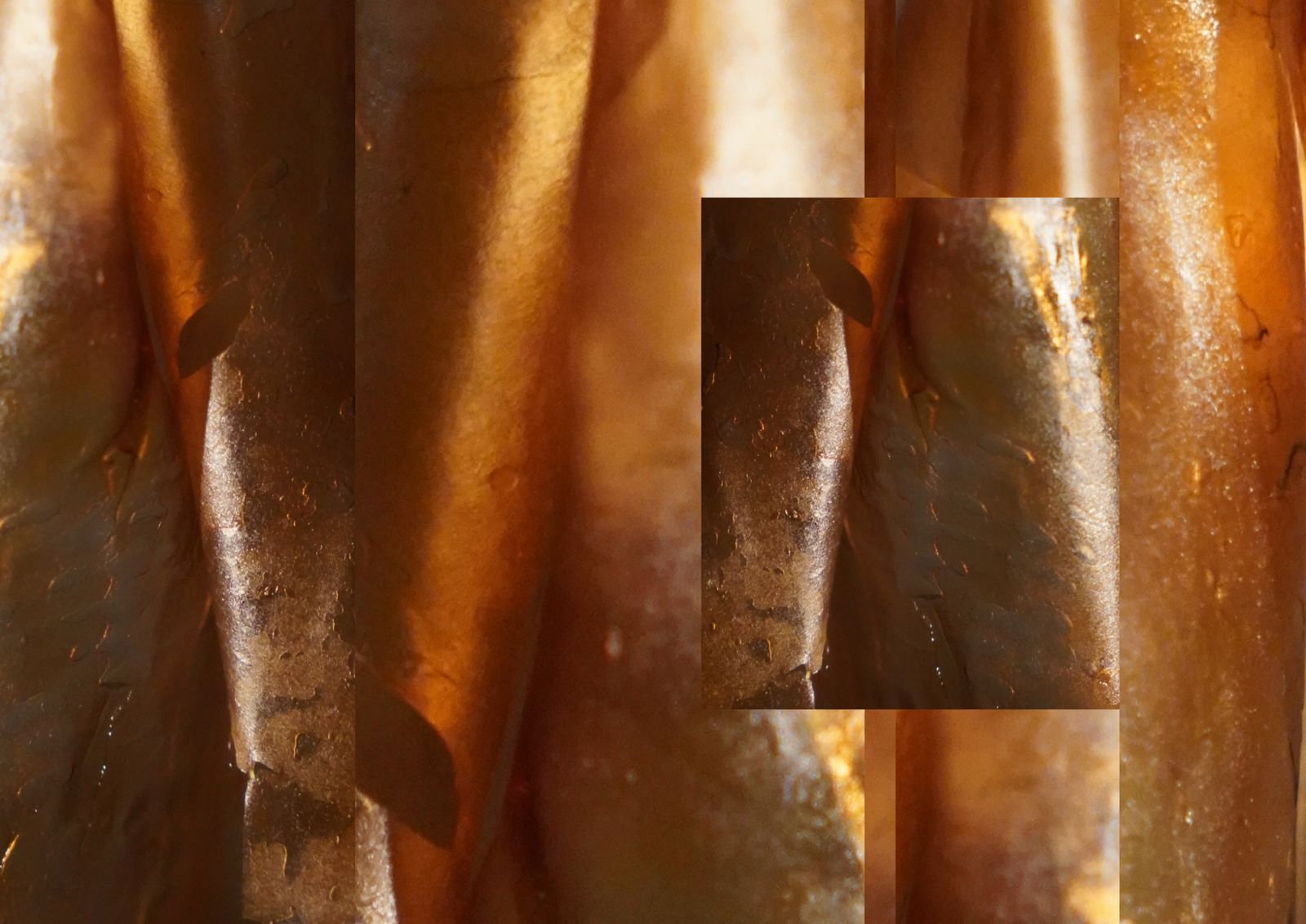
Parsons MS Strategic Design and Management Alumni Develop Innovative Solution to Fashion’s Waste Problem
It is no secret that the fashion industry is one of the world’s biggest polluters. A garbage truck’s worth of clothing is burned or landfilled every second, and while many designers and companies are trying to improve, systemic problems persist.
Emma Kowalczyk and Nij Balar, recent graduates of the MS in Strategic Design and Management program at Parsons’ School of Design Strategies, set out to tackle this systemic issue: what would it take to transform fashion at the level of materials, culture, and desire? Over the past year, they have focused on making sustainable materials visible, desirable, and part of everyday life. With support from a travel grant, they conducted field research at RISD and Brown University, and they also published and presented their work at a circular economy and technology summit in Washington, DC.
“Biomaterials offer an opportunity to fundamentally reimagine the role of materials in fashion, not as extractive inputs but as regenerative agents,” they share. “Unlike conventional materials that rely on finite resources and produce lasting waste, biomaterials have the potential to work in symbiosis with natural systems, replenishing rather than depleting.”
Kowalczyk and Balar were particularly drawn to study biomaterials due in part to their capacity to support circular and localized supply chains, reduce chemical dependency, and even restore ecosystems through cultivation. Biomaterials point towards a future model where design can be actively beneficial thanks to the materials used.
Early in their research, they saw a persistent gap between material innovation and real-world adoption. They initially set out to create their own biomaterials, but interviews with material designers revealed a tougher truth: most struggle to enter the market or scale in meaningful ways. That insight prompted a pivotal shift. Rather than inventing another material, they focused on accelerating the adoption of regenerative materials in fashion by building practical pathways between labs, brands, and consumers.
To achieve this goal, they launched GYLD, a creative agency aimed to shape the fashion industry’s material future through public activations. For their proposed activations, Kowalczyk and Balar aim to partner with biomaterial innovators to craft bespoke experiences that translate scientific potential into cultural relevance, where craftsmanship and connection are centered. A prototype experience has been designed for a fashion retail space in SoHo, where viewers are placed into a multi-sensory environment that showcases the full potential of the biomaterial. This first prototype centers on SCOBY, short for Symbiotic Culture of Bacteria and Yeast, a living, microbial cellulose material that is produced during the fermentation of sweet tea.
Thanks to the aforementioned travel grant, Kowalczyk and Balar visited RISD’s Nature Lab, where they gained critical exposure to experimental biomaterial practices and expert perspectives on the viability of their concept. Immersed in the lab’s interdisciplinary environment, they conducted field research, explored production methods, and tested audience responses to early immersive experiences. The second part of their field research was at Brown University, where they refined their business plan with guidance from a professor of sustainable finance, who noted, “Sustainability focused investors and campaigns have gotten more patient, they look at long term returns now instead of just getting something back right away.”
“I work as a research assistant for the Healthy Materials Lab, which deeply informs our understanding of material health, toxicity, and life cycle,” shares Balar. Although their project leans more into cultural engagement and systems design, the grounding in material safety and environmental impact continues to shape how they evaluate the feasibility and ethics of the materials they work with.
As students in the MS Strategic Design and Management program at Parsons, Kowalczyk and Balar each brought unique backgrounds to their studies, including work experience in spatial design, strategy, exhibition design, branding, creative direction, and more.
“The MS Strategic Design and Management program gave us a shared foundation in systems thinking, innovation, and entrepreneurship,” share the alums. “It pushed us to approach complex challenges through an integrative lens, blending insight-driven research, future-oriented design strategies, and practical business frameworks. The program enabled us to experiment, test our assumptions, and refine our work in conversation with practitioners and scholars across disciplines. It also deepened our understanding of how to design within complexity, balancing systems thinking with tangible outputs, and creative vision with business viability.”
Next up, the two designers are actively applying for grants and seeking funding to support the next phase of their first public activation. They are working to strengthen relationships with biomaterial innovators and collaborators, and are exploring opportunities to test new formats, scale their impact, and grow GLYD as a creative agency.
Looking ahead, Kowalczyk and Balar are turning research into action. Kowalczyk advances creative strategy grounded in cultural insight, systems thinking, and design research. Balar pairs SDM methodologies with spatial and product innovation. Together, they aim to translate systemic problems into clear narratives and tangible solutions that spark meaningful change across industries.